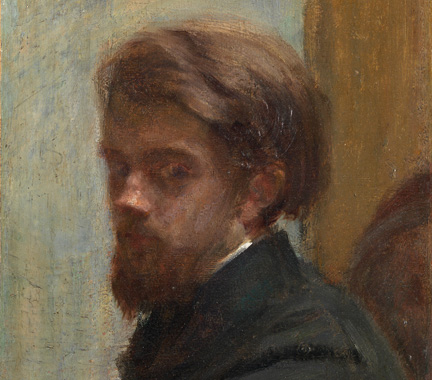 |
| Kader Attia, Réfléchir la Mémoire, 2016 |
 |
| Kader Attia, Installation View, Prix Marcel Duchamp 2016 |
At the centre of the installation is a documentary film, Reflecting on Memory (2016) in which doctors, psychotherapists, a prosthesis engineer, cultural workers, an art historian and a range of other people are interviewed. The interviewees are located across continents, from Lithuania to Paris, to Chicago, each relating their experience and encounter with Phantom Limbs. One health worker tells the story of a patient who complained bitterly of acute pain in his big toe. However, she then asks the off-screen interviewer, what can you say to that when the man's leg has been amputated above the knee? The interviewees discuss the presence and reality of physical sensations that are, in fact, memories of lost limbs. Another therapist tells of a patient who was silent, always. He explains that silence causes anxiety for those who live in its midst, and if the trauma is not worked through and healed, it will be passed on to the next generation: silence means that the children must deal with the "phantom limb," which in this case is a traumatic historical experience they themselves never had.
 |
| Kader Attia, Réfléchir la Mémoire, 2016 |
An African-American professor of theatre from Northwestern University talks of the absence of mourning for slavery in a culture in which slavery still exists. Even if it looks different from pre-Civil War slave labor on cotton farms and Sunday lynchings in town, indeed, even if it is not visible, exploitation and victimization is carried within the contemporary African American body and heart as a memory of their people's treatment by institutions and authorities. All of these different "phantom limbs," serve to create connections between people who might otherwise appear to have nothing in common, people who might not understand the burden of others' trauma. Reflecting on Memory demonstrates that as people we are all in this together and our traumas, whether with individuals or carried by a community, are shared.
 |
| Kader Attia, Installation View, Prix Marcel Duchamp 2016 |
In one of the most powerful interviews, a strikingly beautiful young man talks about his upbringing in France by an Algerian mother. The man tells of his practice as a choir boy, his baptisim, confirmation and so on, as she insisted on his education within the catholic church. For him there was no arabic spoken as a child, clearly as his mother made sure her trauma was not passed onto her son. However, as we know by this point in the film, it's not that simple. As he goes on to explain, the silence of the past must be unearthed and addressed if healing is to happen.
Perhaps the most powerful few minutes of the film come at the end—because the film is shown on a loop, the revelations may come at the beginning—when we learn that a number of the interviewees are in fact missing a limb. Though the discussion throughout has been about the use of mirrors for the rehabilitation of pain caused by a phantom limb, it came as a complete surprise to me that the people appear to have both legs or arms thanks only to the use of mirrors. In the end when the mirror is removed, and the figures are shown with missing limbs, of course, we look at them differently. But not in the same way that we would if we had not just spent the past 30 minutes learning of the stigmatization and pain endured by the phantom limb. The film shows these are brave and extraordinary warriors against so much more than their physical ghosts: their absent limbs come to symbolize the injuries of slavery, genocide, terrorism and the collective and individual injuries that befall us all. Thus Attia's film dismisses all notions of difference between "us" and the abstract "them" when it comes to suffering and loss. And for that reason alone, Reflecting on Memory makes a powerful statement in a contemporary political climate that would have us believe the very opposite.
Images from Réfléchir la Mémoire courtesy Lehmann Maupin, and Galerie Krinzinger. Photo Credit Kader Attia @Adago, Paris 2016.
Installation View images courtesy Centre Pompidou






